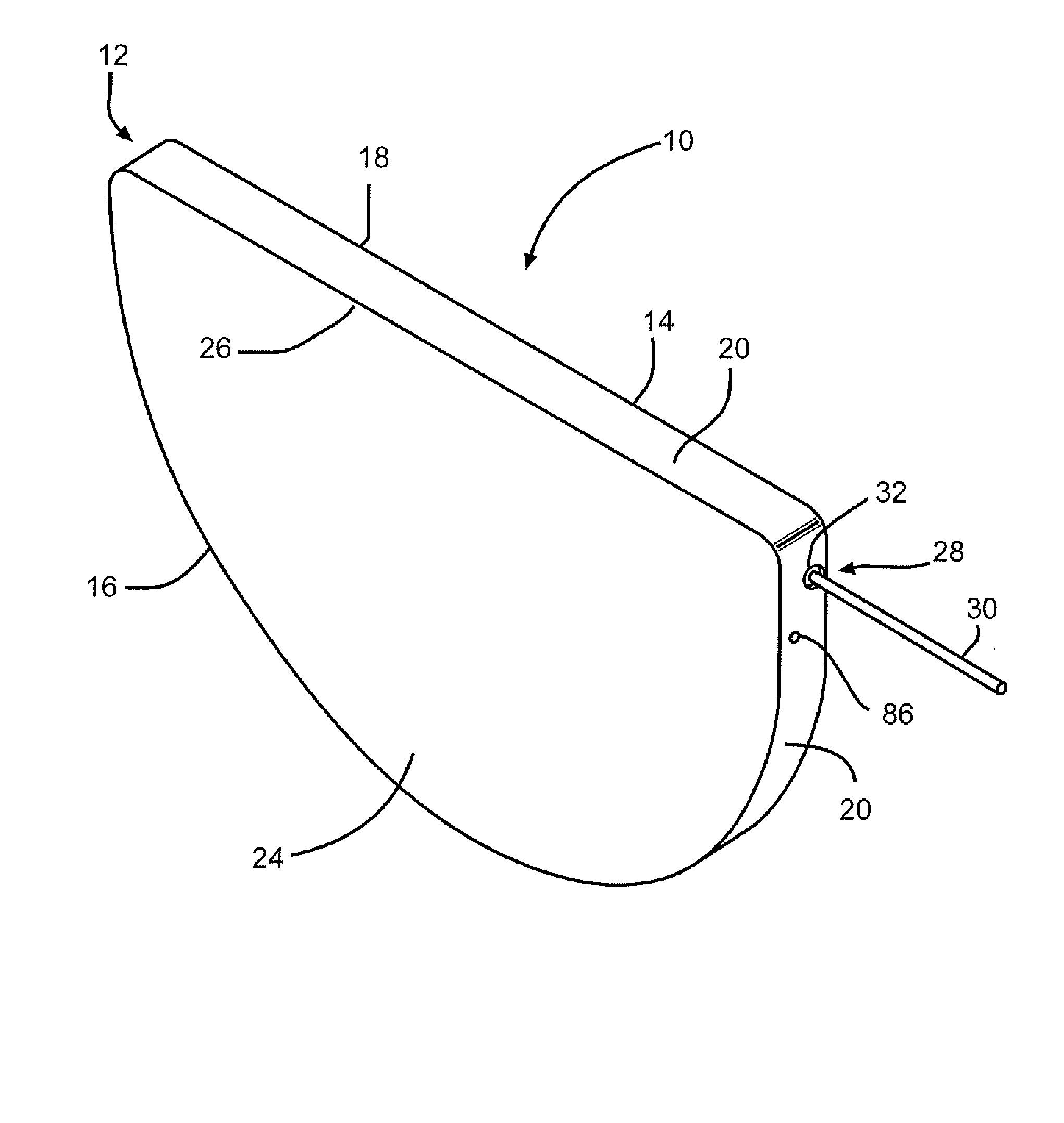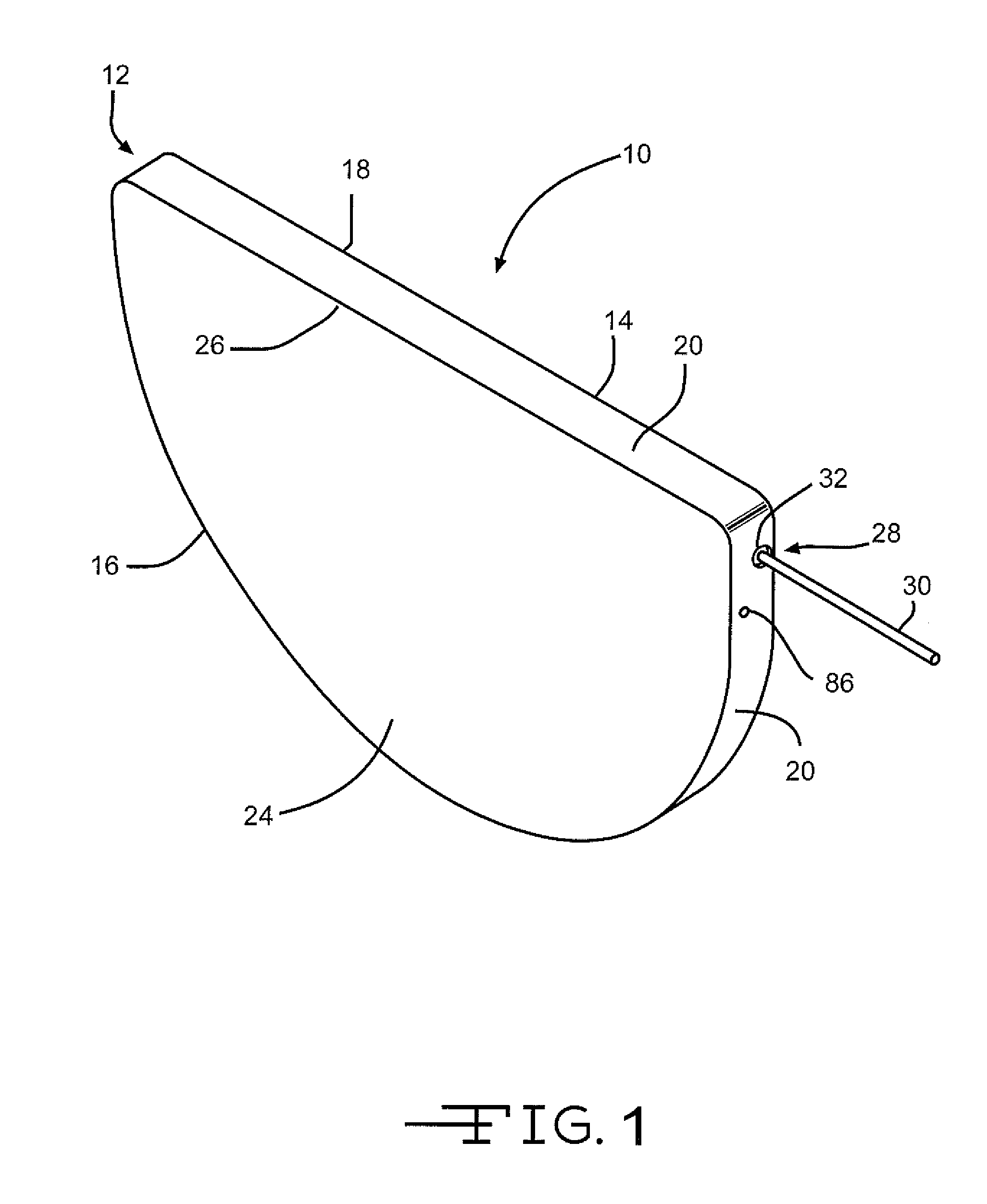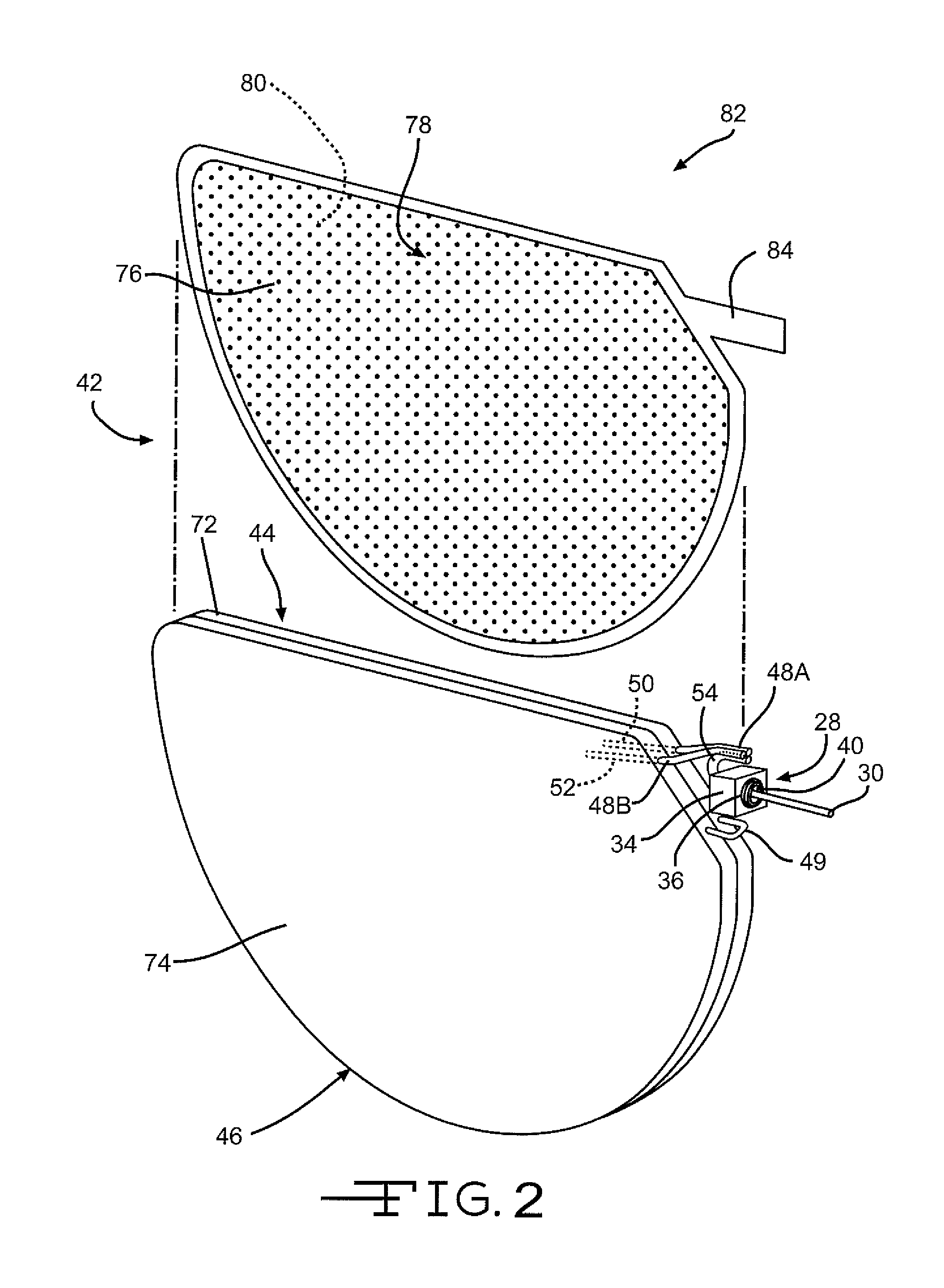Cryogenic grinding of tantalum for use in capacitor manufacture
a technology of tantalum and capacitors, which is applied in the manufacture of electrolytic capacitors, liquid electrolytic capacitors, grain treatment, etc., can solve the problems of reducing the surface oxidation state or phase of the material through exposure to gas, and affecting the production efficiency of anodes. , to achieve the effect of improving the surface properties and electrical resistance of the anode material, facilitating the milling, and reducing the potential to advers
- Summary
- Abstract
- Description
- Claims
- Application Information
AI Technical Summary
Benefits of technology
Problems solved by technology
Method used
Image
Examples
Embodiment Construction
[0025]Turning now to the drawings, FIG. 1 is a perspective view of a capacitor 10 according to the present invention. The capacitor 10 comprises at least one anode composed of an anode active material and a cathode of a cathode active material housed inside a hermetically sealed casing 12. The capacitor electrodes are operatively associated with each other by a working electrolyte (not shown) contained inside the casing. The anodes, cathode and electrolyte of capacitor 10 will be described in detail hereinafter.
[0026]As particularly shown in FIGS. 1, 3 and 3A, the casing 12 is of metal material comprising first and second casing members 14 and 16. First casing member 14 comprises a first face wall 18 joined to a surrounding side wall 20 extending to an edge 22 (FIGS. 3 and 3A). Second casing member 16 is in the shape of a plate and comprises a second face wall 24 having a surrounding edge 26 (FIGS. 3 and 3A). The casing members 14 and 16 are hermetically sealed together by welding t...
PUM
 Login to View More
Login to View More Abstract
Description
Claims
Application Information
 Login to View More
Login to View More - R&D
- Intellectual Property
- Life Sciences
- Materials
- Tech Scout
- Unparalleled Data Quality
- Higher Quality Content
- 60% Fewer Hallucinations
Browse by: Latest US Patents, China's latest patents, Technical Efficacy Thesaurus, Application Domain, Technology Topic, Popular Technical Reports.
© 2025 PatSnap. All rights reserved.Legal|Privacy policy|Modern Slavery Act Transparency Statement|Sitemap|About US| Contact US: help@patsnap.com



